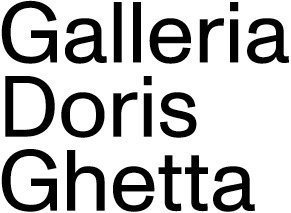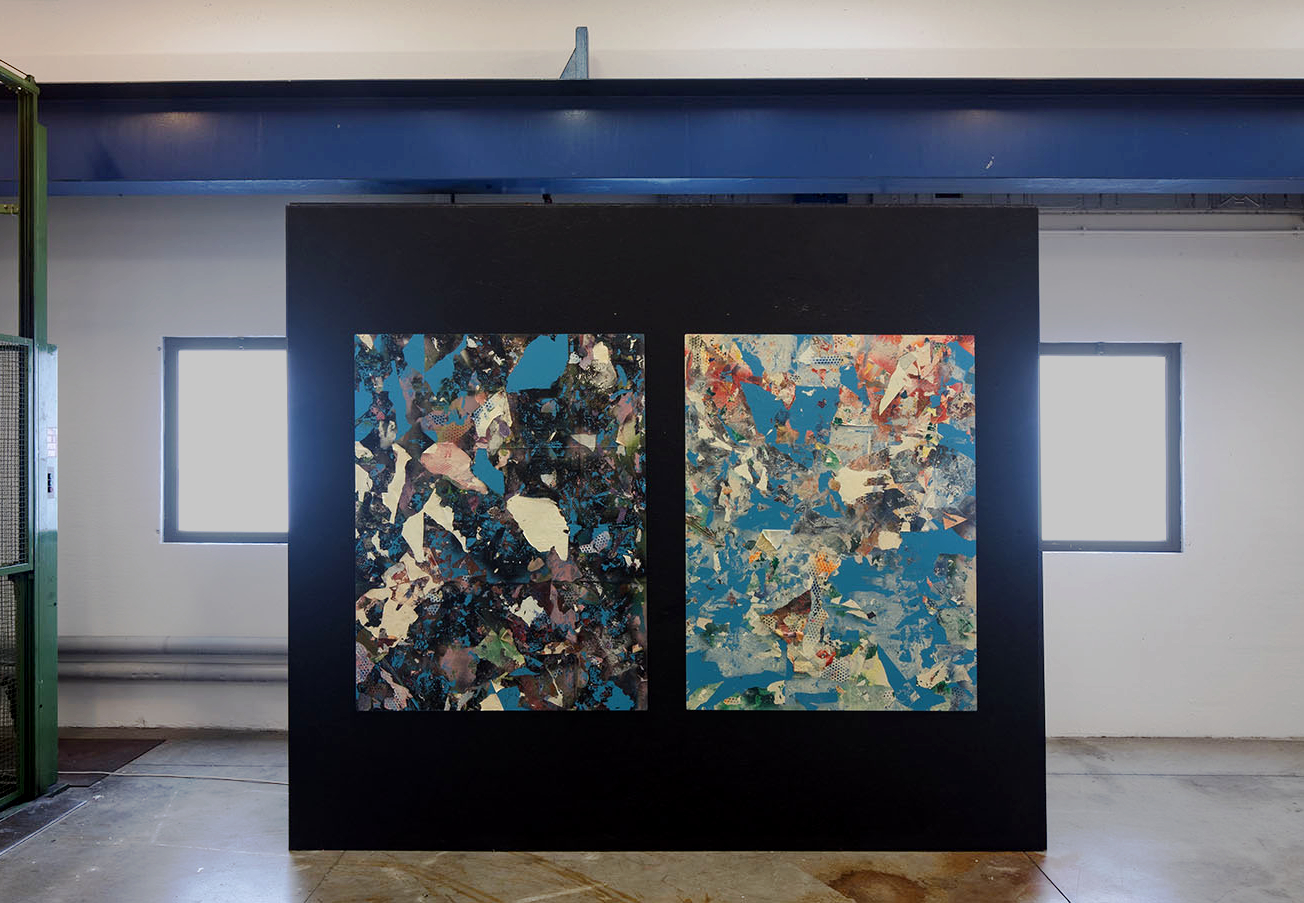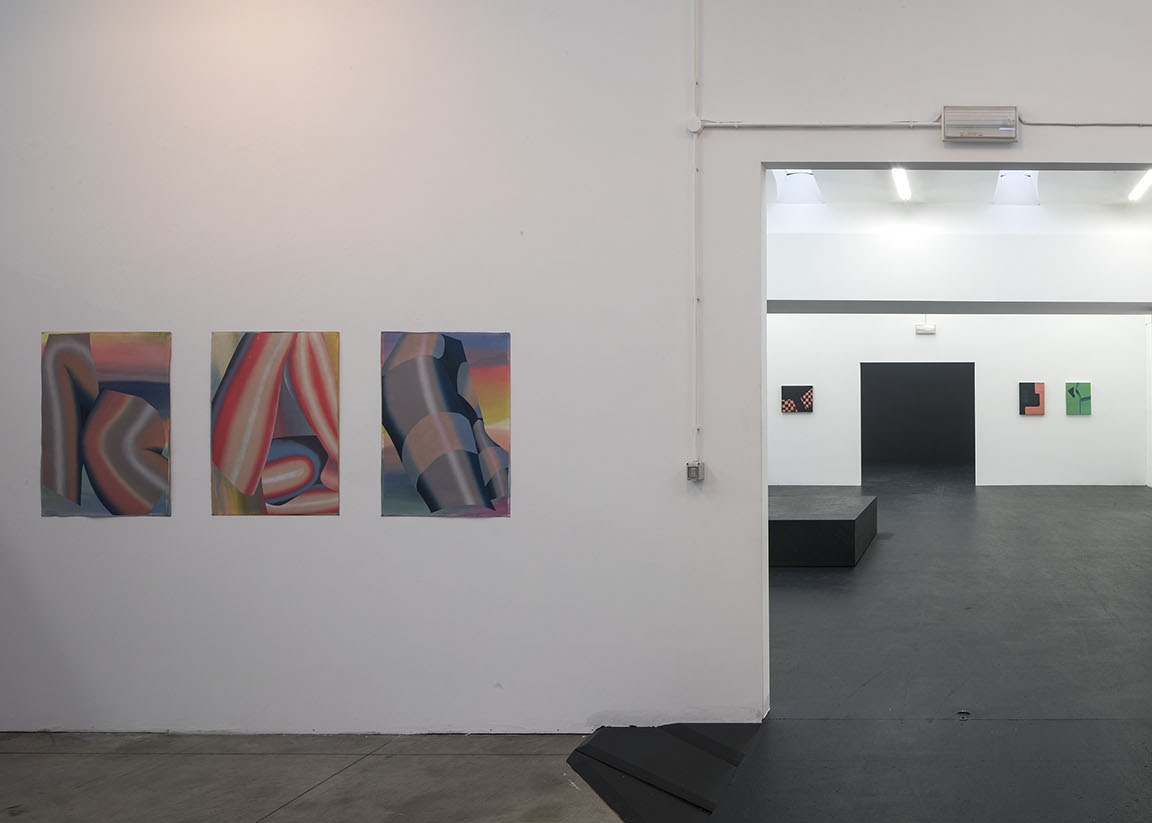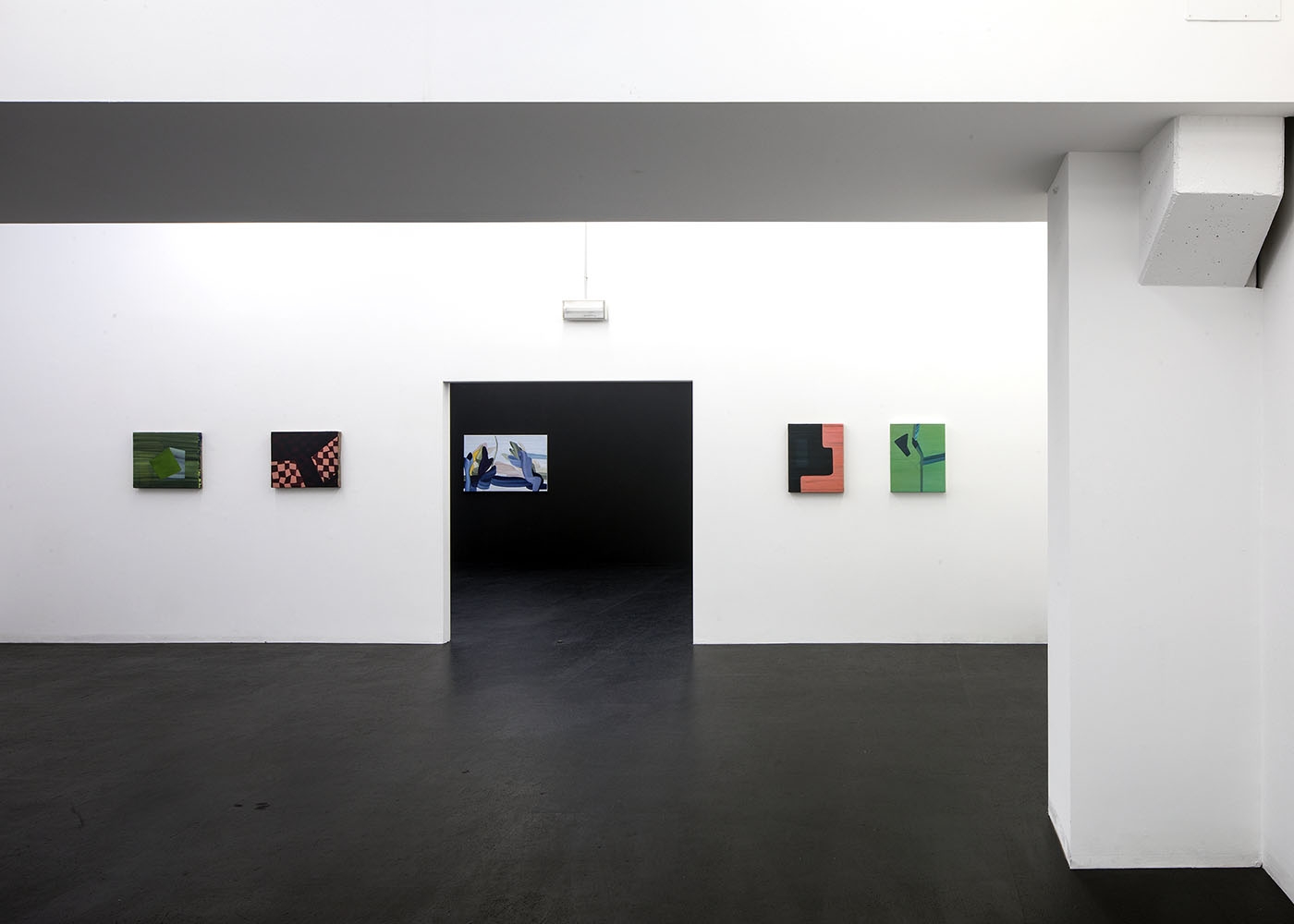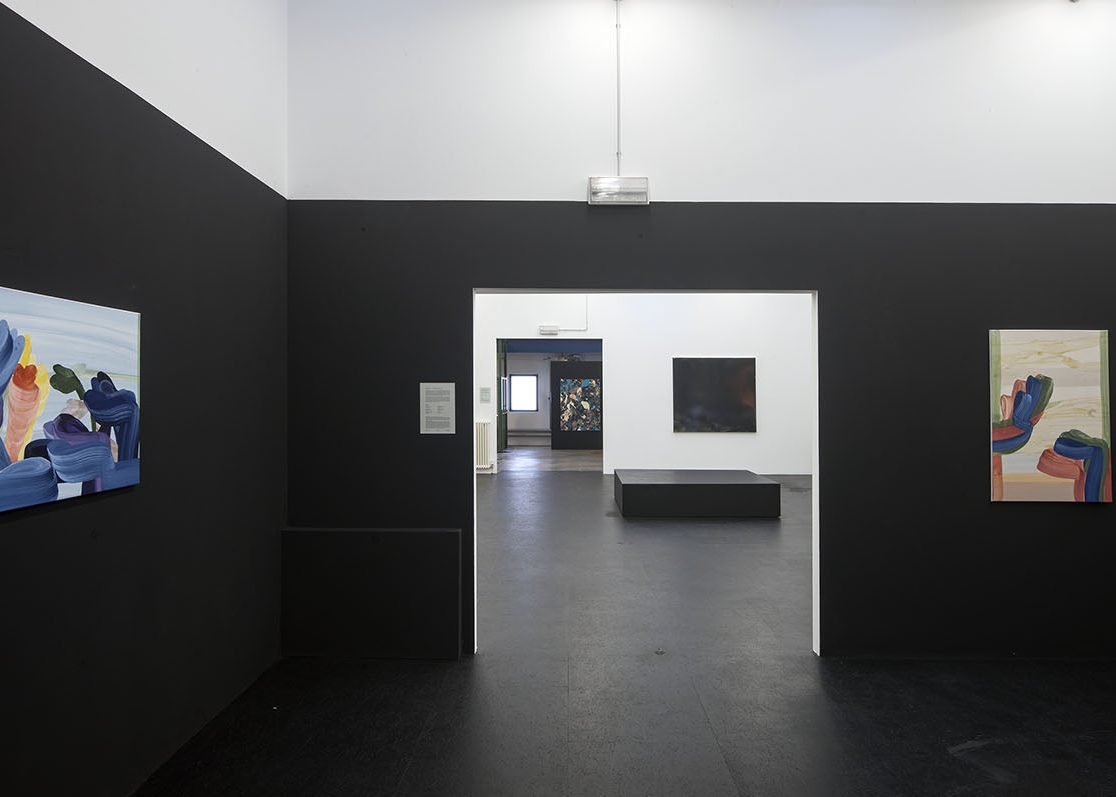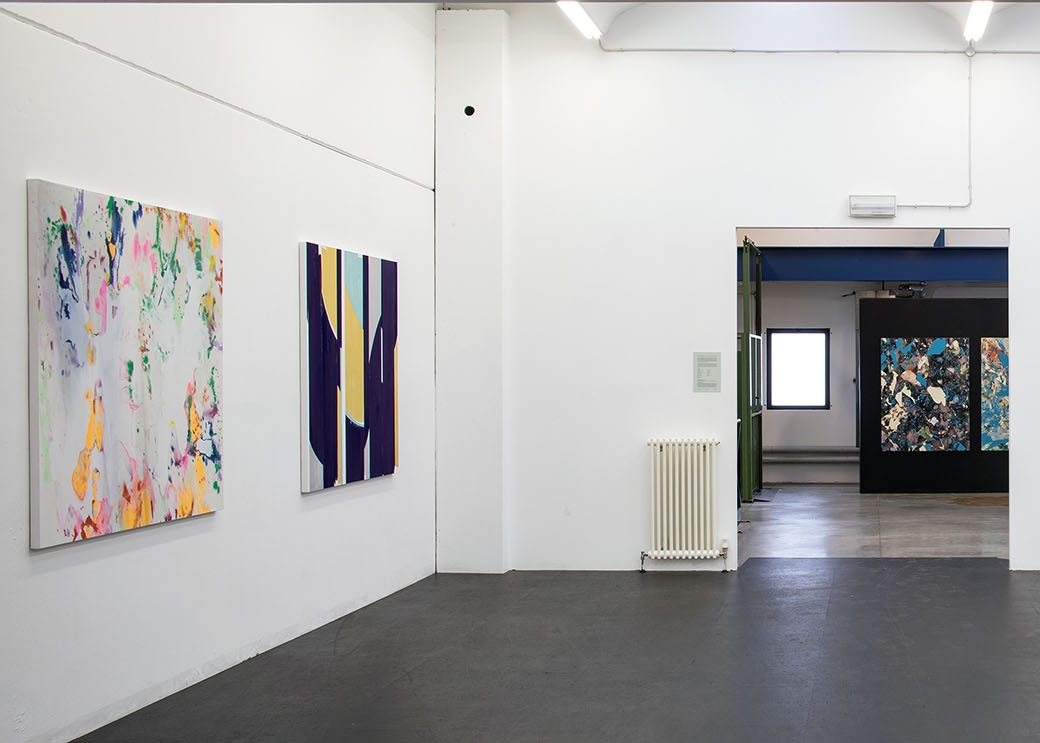MEANING GETS UNSTABLE
Vernissage, 15.12.2017 19h
curated by Sabine Gamper
Artist talk with Martina Steckholzer
10.02.2018
Press release
Comunicato stampa
Pressemitteilung
This is an exciting period for painting. In their works, artists have begun to override historical contradictions in an attempt to fuse different approaches typical of the pictorial tradition, for decades the subject of the fiercest theoretical discussion. The debate has raged on themes such as the prevalence of the sensory aspect over the rational, of abstract over representational art, on the geometrical and the more expressive approaches, on the dialectics of colour, and on the application of non-subjective systems as opposed to more personal interpretations.
This exhibition presents an overview of different interpretations of contemporary painting encapsulating this, a period in culture in which the application of the pictorial medium is highly stratified and rich in nuance.
Painting offers the chance to open a conversation about technique per se, its history and its responsibility vis-à-vis the representation of reality. It refers to various shades of meaning through deconstructive techniques, having recourse to historical examples or blending different stylistic directions, thus resuming the interesting debate on the preservation and interpretation of reality. Hence the title of the exhibition, ‘Meaning gets unstable’, hinting at the way in which established concepts are being questioned and how artists have rediscovered instability and reinterpretation as useful and exciting instruments of provocation.
Mojé Assefjah (1970-) builds imaginary worlds in which gestural painting enters into an engrossing exchange with precise, geometrical pictorial structure. Her painting is grounded in the Eastern calligraphic tradition, which as an artistic discipline is attributed with creative and highly imaginative qualities. From ample gestures that describe intentionally concentrated brushstrokes emerge curved, floating forms that occupy the pictorial space like draped garments and are clearly indebted to the historic pictorial tradition. In a fascinating interaction between opaque and transparent, between internal and external chiaroscuro, this two-dimensional layout gives life to imaginary worlds poised between figure, landscape and theatrical representation.
Viola Bittl (1980-) also works incessantly at a fundamental idea of painting that is reflected in her works. Bittl is concerned with amplifying the concept of abstract painting, examining in her canvases the possibility of linking it to a metaphorical concept. For some years now, one of the main themes of her work has been the interaction between figure and background, which she experiments with in an interplay of openings and coverings, and overlays between different surfaces. She always finds new ways of exploring this relationship in her works with simple geometrical figures and understated colours. Despite their reduced format and their simplification of form and colour, Bittl’s works maintain an incredible rigour, acquiring presence and surface thanks to layer after layer of repainting.
In her works Hadassah Emmerich (1974-) transcends different media approaches, different eras in the history of painting, a variety of cultural identities and, last but not least, the one poised between abstract and representational art. Period photographs, antique books, and artistic masterpieces are the raw material for her brightly coloured works, which she assembles in a process of photomontage and translates onto the canvas with painting and different printing techniques.
In her ‘Snake Charmer Series’ (2016), Emmerich draws inspiration from the formal language of modernism and its representations of the female body, which she explores with pop colours and monumental forms.
In her art, Julia Frank (1988-) explores plastic materials and how they interact with the human body. The exhibition presents a new series of works created in 2017 entitled ‘Maps’, in which the object, performative approach transcends the confines of classical painting. In these works, which consist of a multiplicity of layers of microplastics, the artist develops the theme of the malleability of matter by applying a gas and her own body weight, thus pushing pictorial production towards new frontiers. With her ‘Maps’ series, Julia Frank inquires into painting as an extended medium with which to explore themes such as movement, change and perception, associating it with other techniques typical of contemporary art.
In her new paintings, Martina Steckholzer (1974-) moves through the many possibilities that the pictorial medium makes available, thus producing exceptionally multi-faceted works in which she acquires hugely autonomous freedom of action. An important role is played here by painting’s relationship with digital technologies inasmuch as Steckholzer draws inspiration from photos and videos of exhibitions and works of art. In this case, painting is seen as a historical medium and benchmark, reviving classical topoi such as portraits and abstract interpretations. The world of geometrical forms alternates with more fluid, spiritual chromatic compositions in which moments of expressiveness give way to more informal approaches.
A leitmotiv of all the artists on show is their constant recourse to the history of painting and the appropriation of its most varied possibilities, as well as the translation of historical approaches into contemporary versions. The artists conceive their work in a way that is not disconnected from ongoing developments in other media ambits. But their choral overture towards new possibilities aside, the founding principle of the exhibition is the celebration of the immanent qualities of painting, such as the use of colour, spatial composition, the brushstroke and the sensory materiality of technique.
Curator: Sabine Gamper
